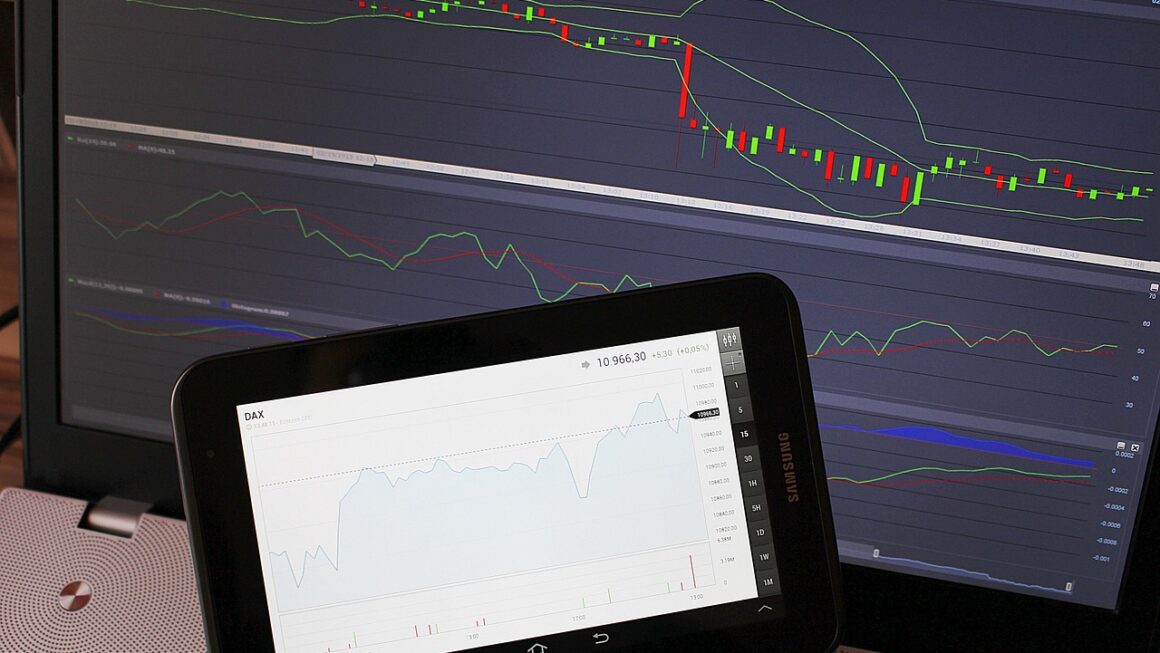Leverage trading, a powerful tool in the financial markets, allows traders to control larger positions with a relatively small amount of capital. While it offers the potential for magnified profits, it also comes with heightened risks. Understanding the mechanics, strategies, and risk management techniques associated with leverage is crucial for anyone considering employing this strategy. This guide will provide a comprehensive overview of leverage trading, equipping you with the knowledge to navigate this complex landscape.
What is Leverage Trading?
Defining Leverage
Leverage, in its simplest form, is borrowing capital to increase the potential return of an investment. In trading, it allows you to control a larger position than your account balance would normally permit. Brokers essentially loan you funds, allowing you to amplify your trading power.
How Leverage Works: A Practical Example
Imagine you have $1,000 in your trading account and your broker offers a leverage ratio of 10:1. This means for every $1 you have, you can control $10 worth of assets. With 10:1 leverage, your $1,000 can control a $10,000 position.
- Example: If you use your $1,000 with 10:1 leverage to buy $10,000 worth of a stock that increases in value by 5%, your profit would be $500 (5% of $10,000). This represents a 50% return on your initial $1,000 investment.
- The Downside: Conversely, if the stock decreases by 5%, you would lose $500, or 50% of your initial capital.
Common Leverage Ratios
Leverage ratios vary depending on the asset class, broker, and regulatory environment. Some common examples include:
- Forex: Ratios can range from 2:1 to as high as 50:1 or even 100:1 in some regions.
- Stocks: Typically, leverage is lower, often around 2:1 or 4:1.
- Commodities: Leverage can vary significantly, depending on the commodity and exchange.
Benefits and Risks of Leverage Trading
Potential Benefits
Leverage offers several potential advantages:
- Magnified Profits: As demonstrated in the example above, leverage can significantly increase potential returns on successful trades.
- Increased Capital Efficiency: Traders can access opportunities that would otherwise be out of reach due to limited capital.
- Portfolio Diversification: By controlling larger positions, traders can diversify their portfolio more effectively with less capital.
- Short Selling Opportunities: Leverage is often essential for short selling strategies, allowing traders to profit from declining asset prices.
Inherent Risks
While leverage can be beneficial, it also introduces significant risks:
- Magnified Losses: Just as profits are amplified, so are losses. A small adverse price movement can lead to substantial losses, potentially exceeding your initial investment.
- Margin Calls: If your losses erode your account equity below a certain threshold, your broker may issue a margin call, requiring you to deposit more funds to maintain your position. Failure to meet a margin call can result in the forced liquidation of your assets at unfavorable prices.
- Increased Volatility Exposure: Leverage amplifies the impact of market volatility on your positions, making your account more susceptible to rapid gains and losses.
- Emotional Trading: The potential for rapid profits and losses can lead to emotional decision-making, resulting in impulsive and potentially disastrous trades.
Strategies for Leveraging Trading Successfully
Thorough Market Analysis
Before using leverage, conduct extensive research and analysis on the asset you plan to trade. This includes:
- Technical Analysis: Studying price charts and patterns to identify potential entry and exit points.
- Fundamental Analysis: Evaluating the underlying factors that influence the asset’s value, such as economic indicators, company financials, or industry trends.
- Sentiment Analysis: Gauging the overall market sentiment towards the asset, which can provide insights into potential price movements.
Implementing Risk Management Techniques
Effective risk management is paramount when using leverage:
- Stop-Loss Orders: Place stop-loss orders to automatically close your position if the price moves against you beyond a predetermined level. This limits your potential losses.
- Take-Profit Orders: Set take-profit orders to automatically close your position when the price reaches your desired profit target.
- Position Sizing: Carefully calculate the appropriate position size based on your risk tolerance and account balance. A general rule of thumb is to risk no more than 1-2% of your capital on any single trade.
- Diversification: Avoid concentrating your entire capital in a single leveraged position. Diversify your portfolio across different assets and markets to reduce your overall risk exposure.
Choosing the Right Leverage Ratio
Selecting the appropriate leverage ratio is crucial:
- Consider your Risk Tolerance: Higher leverage ratios offer greater potential profits but also carry higher risks. Choose a ratio that aligns with your risk appetite and experience level.
- Assess Market Volatility: In volatile markets, it is prudent to use lower leverage ratios to mitigate the impact of price swings.
- Start Small: If you are new to leverage trading, begin with lower ratios and gradually increase them as you gain experience and confidence.
Understanding Margin Requirements
Be aware of the margin requirements set by your broker:
- Initial Margin: The amount of capital required to open a leveraged position.
- Maintenance Margin: The minimum amount of equity you must maintain in your account to keep your position open.
- Margin Call: When your equity falls below the maintenance margin, your broker will issue a margin call, requiring you to deposit additional funds or risk having your position liquidated.
Choosing a Broker for Leverage Trading
Regulation and Security
Select a broker that is regulated by a reputable financial authority:
- Check Regulatory Status: Verify that the broker is licensed and regulated by a recognized regulatory body, such as the SEC (Securities and Exchange Commission) in the United States, the FCA (Financial Conduct Authority) in the United Kingdom, or ASIC (Australian Securities and Investments Commission) in Australia.
- Security Measures: Ensure the broker employs robust security measures to protect your funds and personal information, such as encryption and two-factor authentication.
- Client Fund Segregation: Look for brokers that segregate client funds from their own operational funds, providing an extra layer of protection in case of the broker’s insolvency.
Leverage Options and Trading Platform
Evaluate the broker’s leverage offerings and trading platform:
- Leverage Ratios: Compare the leverage ratios offered by different brokers for the assets you intend to trade.
- Trading Platform Features: Choose a broker with a user-friendly and feature-rich trading platform that provides real-time market data, charting tools, and order execution capabilities.
- Mobile Trading: If you prefer to trade on the go, ensure the broker offers a mobile trading app that is compatible with your device.
Fees and Commissions
Consider the broker’s fees and commissions:
- Spreads: The difference between the bid and ask prices of an asset. Lower spreads can reduce your trading costs.
- Commissions: Some brokers charge commissions on each trade, while others offer commission-free trading. Compare the commission structures of different brokers to determine which is most cost-effective for your trading style.
- Overnight Funding Fees: If you hold leveraged positions overnight, you may be charged overnight funding fees. These fees can erode your profits, especially if you hold positions for extended periods.
Psychological Aspects of Leverage Trading
Emotional Control
Leverage trading can be emotionally challenging:
- Fear and Greed: The potential for rapid profits can induce greed, leading to impulsive decisions. Conversely, the fear of losses can cause you to exit winning trades prematurely or hold onto losing trades for too long.
- Discipline: Develop a disciplined trading plan and stick to it, regardless of your emotions. Avoid deviating from your strategy based on fear or greed.
- Patience: Leverage trading requires patience. Don’t rush into trades or try to force profits. Wait for the right opportunities to present themselves.
Avoiding Overconfidence
Success with leveraged trades can lead to overconfidence:
- Humility: Recognize that market conditions can change quickly and that no trading strategy is foolproof.
- Continuous Learning: Stay informed about market trends and continuously refine your trading skills.
- Risk Assessment: Reassess your risk tolerance and trading plan regularly.
Conclusion
Leverage trading can be a powerful tool for experienced traders, offering the potential for amplified profits and increased capital efficiency. However, it is crucial to understand the inherent risks and to implement robust risk management strategies. By conducting thorough market analysis, choosing the right leverage ratio, selecting a reputable broker, and maintaining emotional control, you can increase your chances of success in the world of leveraged trading. Remember that knowledge, discipline, and a clear understanding of your risk tolerance are essential for navigating the complexities of leverage and achieving your trading goals.




